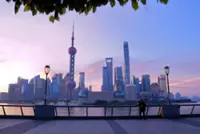Amanjiwo's magnificent Dalem Jiwo suite has its own private rotunda with amazing views of the surrounding hills and padi fields. — T'roka
Flying into the Yogyakarta International Airport in Indonesia, you get a view of the sea on one side, and patches of padi fields and farm land on another. For many South-East Asians, that view is a very familiar one, and perhaps not entirely exciting for a “healing” holiday post on social media.
The airport is fairly new, officially opened in the thick of the pandemic in 2020. It isn’t a busy airport, but flights do tend to come in at the same time, which may cause a bit of a lag at immigration. There are only two international flights at the moment – from Malaysia (Kuala Lumpur) and Singapore – and chartered flights to Jeddah, Saudi Arabia during the haj and umrah pilgrimage season.
Already a subscriber? Log in
Save 30% OFF The Star Digital Access
Cancel anytime. Ad-free. Unlimited access with perks.





